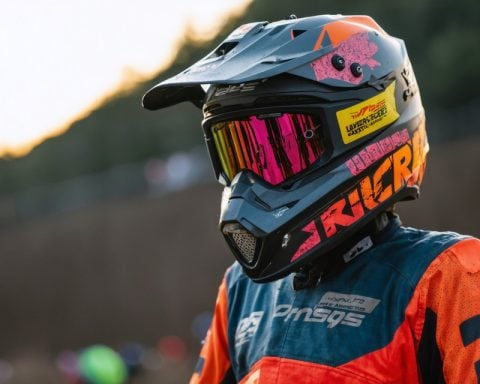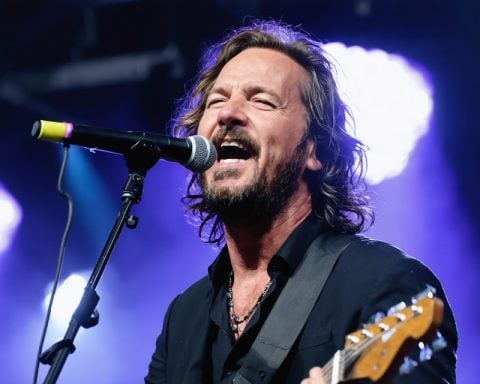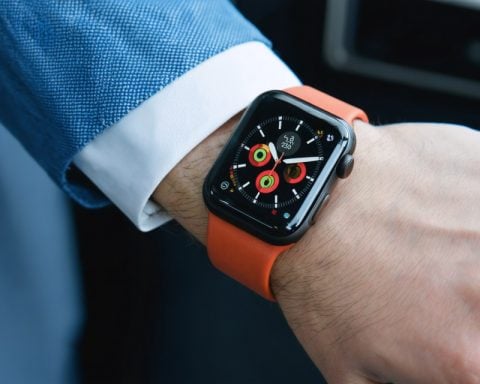- A shift in cybersecurity is necessary as drones increasingly impact various industries, focusing on a resource-centered approach rather than traditional perimeter defenses.
- Kip Gering advocates for “zero trust” and “secure-by-design” strategies, integrating security as a fundamental part of product development.
- The zero-trust model requires verifying every digital interaction, moving beyond outdated security methods like air-gapped systems.
- In the face of AI-driven threats and Malware-as-a-Service, comprehensive security is crucial at every technological level.
- Stability in drone communication systems is essential to maintain operational integrity, demanding decentralized and resilient solutions.
- SpiderOak’s platform focuses on integrated security to enhance reliability and reduce costs, ensuring robust defenses against vulnerabilities.
- Gering’s approach marks a proactive path forward in securing the expanding role of drones in industry.
Amidst the soaring skies of drone innovation, a storm brews on the security front. As drones carve out their niche across industries, the realm of cybersecurity grapples with defining what it truly means for a system to be “secure.” Instead of relying on traditional models, visionaries like Kip Gering are forging a new path—one that embraces a mindset shift from perimeter defenses to a dynamic, resource-centered approach.
Gering, an expert honed by his tenure in the US Air Force, illuminates the necessity of adopting “zero trust” and “secure-by-design” principles. His journey from crafting resilient communication networks in California and Texas to safeguarding critical infrastructure underscores his expertise in protecting complex industrial environments. Now, as the Chief Revenue Officer at SpiderOak, he champions a paradigm where security isn’t just an add-on but an integral part of product design.
The zero-trust philosophy redefines defense by scrutinizing each digital interaction: “never trust, always verify.” This model constrains access to data, even within a network, evolving beyond outdated air-gapped systems. In a landscape teeming with AI-driven threats and Malware-as-a-Service (MaaS), it’s imperative that security pervades every level of technology.
In the drone sector, the stakes compound where communication stability can make or break critical operations. Gering emphasizes the need for decentralized, resilient communication systems that withstand signal jams and low-bandwidth challenges. SpiderOak’s cutting-edge platform ensures that drone manufacturers can deliver reliable communication, crucial for missions with autonomous or crewed aircraft.
Gering’s strategy roots cybersecurity from the ground up, merging functionality with safety—from mission payload commands to real-time data exchange. By integrating security at the inception, SpiderOak’s approach not only reduces costs but fortifies defenses against emerging vulnerabilities. As drones continue to revolutionize industries, this forward-thinking road map offers a beacon for secure skies.
Unlocking the Secrets to Secure Drone Operations in a Rapidly Evolving World
How Zero Trust is Transforming Drone Security
The adoption of drones across various industries—from agriculture and logistics to public safety and beyond—reflects a burgeoning market poised for growth. Yet, with this progress comes the challenge of ensuring robust cybersecurity measures. As drones become more integrated into critical infrastructures, deploying a “zero trust” framework is imperative to fortifying their ecosystems against complex cyber threats.
Real-World Use Cases: A Growing Dependency on Drones
Drones have shown immense potential in diverse fields:
– Agriculture: Used for crop monitoring, soil analysis, and treatment distribution.
– Logistics and Delivery: Perform rapid deliveries, especially in remote locations.
– Public Safety and Defense: Aid in search and rescue operations and provide surveillance.
As these use cases expand, the criticality of secure platforms like those offered by SpiderOak, which ensures real-time, tamper-proof data communications, becomes apparent.
Market Forecasts & Industry Trends
The global drone market is projected to reach significant growth, with estimates suggesting the industry will be worth over $40 billion by 2025 (source: Market Research Company). This growth is driven by technological advancements, favorable regulatory environments, and increasing adoption.
Reviews & Comparisons: Zero Trust vs. Traditional Security Models
Traditional security models, like air-gapped systems, are increasingly failing to meet the demands of modern cyber threats. Zero trust models offer superior defense by requiring authentication at every step, ensuring each access within a network is adequately vetted. This is crucial in drone operations where integrated networks manage sensitive data and commands.
Controversies & Limitations
While zero trust significantly enhances security, challenges remain, including:
– Resource Intensive: Implementing zero trust requires substantial initial investment.
– Complex Management: Constant authentication processes can burden network bandwidth and require precise configuration, especially in environments with limited resources.
Features, Specs & Pricing: The SpiderOak Platform
SpiderOak offers a decentralized platform tailored for drone communication that emphasizes:
– Real-Time Data Integrity: Secures mission-critical data against interference.
– Resilient Communication Systems: Ensures controlled data flow, even under low-bandwidth or jamming threats.
Pricing varies depending on the scale and specific industry application, ensuring tailored affordability for various drone operators.
Security & Sustainability: Built for the Future
Security measures aside, sustainability in drone production and operation is also essential. Leveraging energy-efficient designs and sustainable materials promotes both ethical production and reduced environmental impact.
Insights & Predictions
The future of drone security lies in the convergence of AI and blockchain technologies to create self-monitoring and adaptive security protocols that evolve with threats. Expect tighter regulations and standards as governments aim to protect their airspace amid increasing drone traffic.
Pros & Cons Overview
Pros:
– Enhanced security via zero trust frameworks.
– Reliability in critical operations and communication.
Cons:
– High initial setup and operational costs.
– Complexity in management and scale.
Actionable Recommendations
– Begin with Assessments: Evaluate current security measures and identify vulnerabilities.
– Invest in Education: Train teams on zero trust principles.
– Adopt Early: Organizations should not delay integrating advanced security frameworks like those from SpiderOak to stay ahead of threats.
Visit SpiderOak for more information on their secure platform solutions.
Conclusion
Embracing zero trust in drone operations offers a robust methodology to address the myriad cyber threats looming on the horizon. By understanding emerging trends, investing in resilient security frameworks, and staying informed on best practices, industries can unlock the full potential of drones while ensuring safety and reliability in the skies.



















